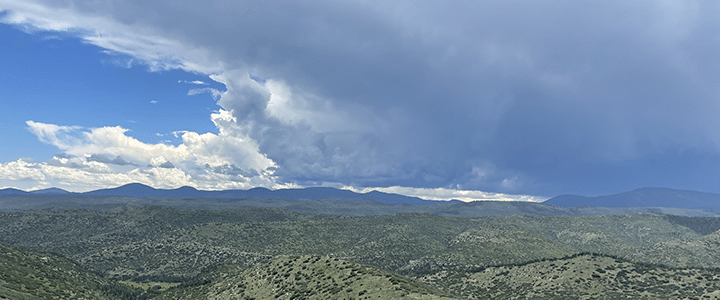It’s official: my son and I are returning to Philmont. We first went in July 2021, during a lull in one of the pandemic’s many viral waves. We were out west for 14 days; two days acclimating to the climate in Colorado Springs and then 12 days on the trail in the mountainous desert of New Mexico
We’re heading back in July 2025 for another 12-day backpacking trip. Last time around, we went on a hiking-focused northern trek. This time, we’re planning to do an easier, more program-focused southern trek.
I’ll be 53 and Lucas will be 19 … and will have just completed his first year of college. Although the trek will be easier (in theory), it’ll still require a heck of a lot of trip preparation and physical training.
Gear Check
One advantage to having been to Philmont is ’21 is I have all the gear I need. Backpack? Yep – it’s an Osprey 85-liter pack. Sleeping bag? Yep. It’s a Nemo Forte side sleeper. Tent? Yep. It’s an REI Co-op Quarter Dome 2 Tent. I’ve also got a two-person MSR backpacking tent. Backpacking stove? I’ve got a Whisperlite … and most of the time I can light it without creating a fireball.
There’s all the other stuff too, like a lightweight puffy jacket (doubles as a pillow), wicking shirts, hiking pants, etc. In short, everything we spent a year acquiring for Philmont last time is good to go for this time.
And this time around, I actually know how to use it.
For this trek, I think the key will be getting efficient. Just because I have an 85-liter pack, that doesn’t mean I have to fill that pack – I’d like to find a better sweet spot between “nice to have” and “must have”.
Target: 200
I’d like to say that after getting in shape for Philmont ’21, I stayed in shape … but I didn’t.
I’m still in decent shape overall, but a couple of injuries (particularly a strained left oblique) played havoc with my regular exercise routine. The chaotic schedules of the waning days of the pandemic didn’t help either, so I’ve got a lot of work to do.
I’m currently weighing in at 225 lbs., which is heavier than I was before Philmont ’21 but some of that is muscle (I still fit into my 36 waist jeans, which I couldn’t do back in ’19 and ’20). Still, the recommended weight for Philmont is 200 lbs, and I’d like to get back to that (or at least something like 205 lbs).
Aside from the Philmont recommendation, it’s not so much about the weight as it is how I feel when I’m at that weight and how I feel when I’m in decent shape. My back’s not sore, I’ve got more energy, and I’m more comfortable in my own skin. That’s a good state to be in even without a two-week backpacking trip looming large … and this time around, I’d like to stay in that kind of shape (or at least, something close to it).
The Trail Back to Philmont
In 2020 and 2021, I did a series of monthly posts called The Trail to Philmont. It helped me stay on target, reflect on what I’d accomplished, and contemplate what I still needed to do. I plan on doing a similar series of posts this time, but I think I’m going to focus more on the gear I’m using, lessons learned, etc. The posts will be an opportunity for reflection and iteration … and they’ll help someone else who’s also on their trail to Philmont.
My other goal is to go back and document our 2021 trek – I did all the posts leading up to Philmont, but never wrote about the trip itself (I did talk about the trip over on Lair of Secrets). With my son’s Eagle Scout Court of Honor coming up in May, it feels like a good time to look back on that trip, document it, and pull together a few signature photos to share with folks.
I’ll also be chronicling my exercise routine as a way of keeping myself on track. Knowing that I’m going to do a monthly post about the return to Philmont – and knowing that I’ll need to look back on how my exercise routine went – keeps me motivated to do the actual work.
Ah, the twin motivating powers of public accountability and an unwavering deadline!
Featured Image Meta
A view of the mountains at Philmont, from our 2021 trip. Credit: Ken Newquist.

